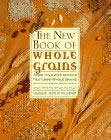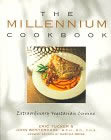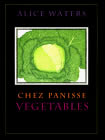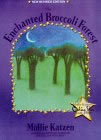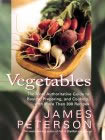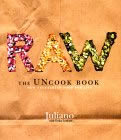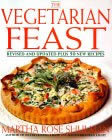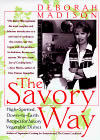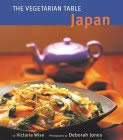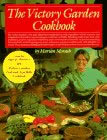|
|
by Annie Somerville
The opening of Greens Restaurant on San Francisco Bay in 1979 changed
forever the image of vegetarian cooking in America. From the restaurant's
imaginative mix of casual elegance, exciting tastes, and a subtle message
of health and harmony, a distinctive cuisine was born that has continued
to bring joy to many thousands of diners every year as well as to the
hundreds of thousands of readers who delight in The Greens Cookbook. In
its latest incarnation, the restaurant has evolved toward a lighter, leaner,
simpler cuisine, one that keeps all the spirit and refinement of the original
menu but depends more on the excitement of sparkling fresh produce and
its integral relationship to the dishes it inspires.
In close to 300 original recipes, the new Greens style
includes exuberant salads, soups, the legendary crusty Greens pizzas,
curries and hearty stews, grilled vegetables, and intriguing turnovers
made with filo pastry, tortillas, and savory doughs. And of course there
are heavenly breads and the famous desserts, like ginger pound cake with
poached apricots and cherries. This cornucopia of brilliant dishes focuses
on tantalizing tastes, with a new simplicity, clarity, and liveliness
as its hallmark.
Annie Somerville, the executive chef at Greens, goes
right to the heart of the matter: extraordinary produce that's bursting
with flavor, color, and texture. Some of her favorites--like crinkly Bloomsdale
spinach, candy-striped Chioggia beets, succulent Rosefir potatoes--are
highlighted in the text for gardeners and farmers' market aficionados.
But the Greens style is above all accessible; ordinary red beets will
be just fine if more exotic varieties are unavailable. To help with availability,
there's information on locating farmers' markets throughout the country
as well as sources for plants, seeds, and local resources.
Because the garden is at the center of this book,
readers are encouraged to try their hand, in tiny backyards and windowsill
boxes if necessary. Invaluable growing tips are offered from Green Gulch
Farm, the source of much of the stunning produce served at the restaurant.
Other special features include a section on low-fat cooking and another
on pairing wine with vegetarian food.
All of the abundance and exuberance that the title
Fields of Greens implies is here, for the novice as well as the expert,
for simple last-minute meals as well as extravagant occasions. For truly
inspired contemporary vegetarian cooking, Fields of Greens is the essential
sourcebook.
Annie Somerville trained under Deborah Madison, the founding chef at Greens
Restaurant. Under Somerville's guidance as executive chef, Greens has
become a culinary landmark. Her work has been featured in Gourmet, Food
& Wine, Ladies' Home Journal, SF, and California magazine. She also
contributed to The Open Hand Cookbook and Women Chefs cookbook.
|


